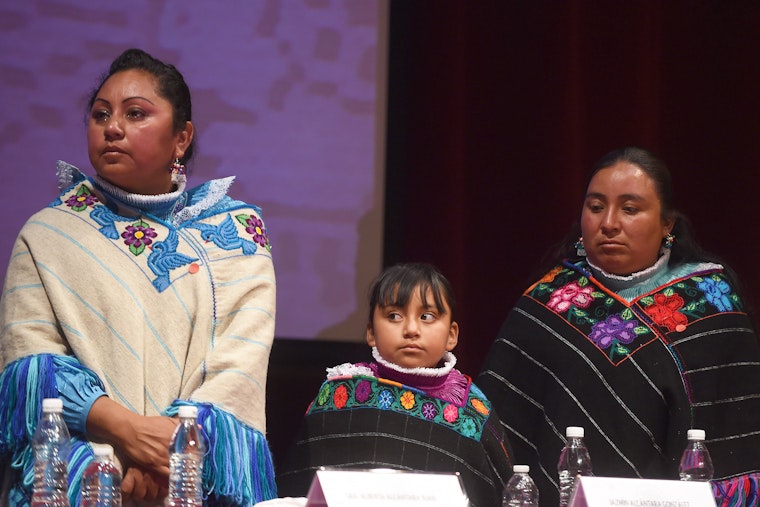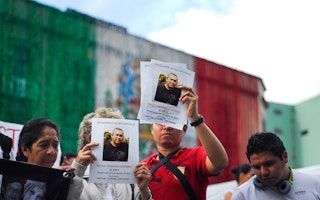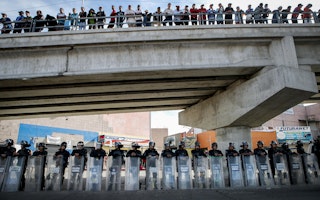New Report Takes Stock of Court Reparations Rulings across Latin America
By Masha Lisitsyna & Adriana Garcia Garcia

Reparations for torture, disappearances, arbitrary killings and other serious human rights violations are not easy. How does a court repair for the hurt and pain caused by the violent death of a child or a partner? How can a torture victim’s terror and pain be somehow made good?
Over the past two decades, judges and courts across Latin America have repeatedly sought to address these questions—more so than in any other region, given the region’s history of transition to democracy after military rule, and the continued experience of violent conflict between state forces, drug gangs and guerrilla groups.
Now, a new guide, published in Spanish and produced with the support of the Justice Initiative, seeks to draw on these experiences, and to provide judges and justice officials from the region with a guide to evolving practice in this vitally important area. Unlike previous studies, it takes a granular look at a range of national court rulings, drawn from a variety of situations, rather than the better documented issue of reparations from international tribunals, or in post-conflict agreements.
As two of the joint authors of the guide published by our partners, Mexico’s Centro de Investigacion y Docencia Economicas (CIDE) and the Federal Administrative Tribunal, we have outlined five key elements of reparation: restitution, compensation, satisfaction, rehabilitation, and non-repetition.
For each type, the guide identifies general criteria and provide examples based on legal cases from the Inter-American Court of Human Rights, the United Nations treaty bodies, and domestic cases from Argentina, Brazil, Chile, and Colombia.
In reparation cases, judges tended to focus until quite recently on compensation for harm—an important but not sufficient measure of reparation. But slowly the practice is developing towards a more holistic approach.
For example, judges in Colombia, which has struggled with a long and brutal civil conflict and battles with drug gangs, developed sophisticated jurisprudence on reparations for abuses committed by state forces, including not only compensation but also rehabilitation to victims and the enactment of laws as non-recurrence measures.
Similarly, a court in Brazil responded to a case in which a detainee had developed serious health problems due to prison conditions by ordering measures to improve and monitor conditions at the prison in question, along with compensation for the victim.
In Mexico, the courts have notably ordered state institutions to publicly acknowledge their responsibility for human rights violations—such as the public apology delivered by the federal prosecutor in February, 2017, to three indigenous women who had spent three years in prison on fabricated charges.
Mexico’s eventual decision in December, 2018, to create a commission of inquiry into the disappearance of 43 students in the infamous 2014 Ayotzinapa case was also informed by a court order.
Other measures ordered in Mexico have included requiring city authorities to list streets deemed unsafe for unaccompanied women, and requiring the publication by the executive branch of Gender Violence Alerts in the State of Mexico in 2018.
The guide draws on this evolving interpretation of international jurisprudence, much of it developed by the Interamerican Court of Human Rights, due to the historic factors noted above. It concludes that effective reparations require:
- the existence of provisional measures which guarantee reparation;
- a separation of criminal actions and the mechanisms for accessing reparations;
- absence of statute of limitations;
- non-restrictive interpretations and flexibility of process for accessing reparations;
- inclusive mechanisms in which victims can participate in constructing reparations; and
- mechanisms to verify that the reparations were, in effect, granted.
More broadly, reparations must be appropriate: they must grant satisfaction to the injured party and ensure these violations do not happen again. They must be comprehensive, incorporating specific measures of redress for different types of harm and loss.
Judges also need to consider the gender perspective, and need an analysis of both individual circumstances of the victim, and of the measures needed to prevent these violations in a great number of cases in the future.
Meaningful participation and consultation of victims is crucial in developing adequate reparations. We hope that the Guide will be helpful to not only judges but also to litigators, activists, victims and their representatives and will provide some useful examples and inspirations on what to request from the courts.

Masha Lisitsyna is a senior managing legal officer with the Accountability division at the Open Society Justice Initiative.
Centro de Investigacion y Docencia Economicas (CIDE), Mexico City

